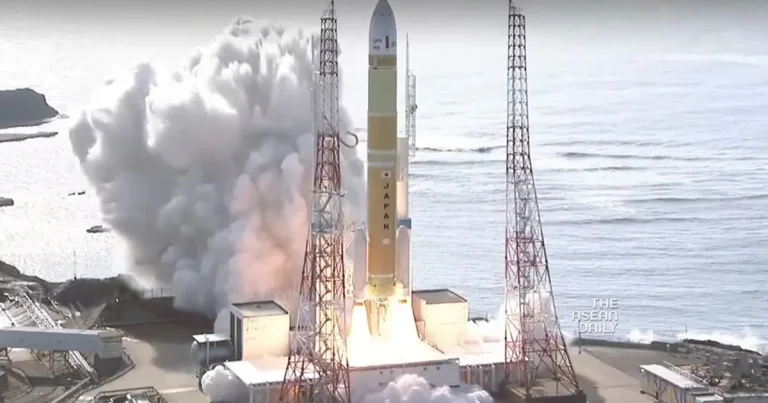17-2-2024 (TOKYO) Japan’s next-generation H3 rocket soared into the sky on Saturday, marking a triumphant second attempt after a failed maiden launch nearly a year ago. The Tanegashima Space Center, located approximately 1,000 kilometers southwest of Tokyo, served as the launch site for this significant moment in Japan’s space exploration.
The Japan Aerospace Exploration Agency (JAXA) oversaw the launch, with Mitsubishi Heavy Industries (MHI) leading the manufacturing of the H3 rocket. The liftoff occurred at 9:22 a.m. Japan time, and the event represents Japan’s first new rocket in 22 years, signifying the nation’s commitment to advancing its space initiatives.
The H3 rocket’s payload included two satellites, with the first successfully released into orbit around 17 minutes into the flight. The second satellite was scheduled for release approximately eight minutes later, showcasing the capabilities of this technologically advanced launch vehicle.
Japan’s space program aims to establish a distinctive presence in scientific exploration, space debris removal, and environmental monitoring for natural disasters and climate change. While the United States and China lead the global space race, Japan seeks to carve out a niche in specific areas of space exploration.
WATCH: Japan’s H3 rocket takes flight for the second time, aiming for a successful launch. ???????????? #JAXA #H3Rocket #SpaceExploration pic.twitter.com/LS7d9PwuQr
— Updates (@sirfupdate_) February 17, 2024
The H3 rocket follows Japan’s recent achievement of the first lunar soft landing on January 20, an accomplishment that marked a historic pinpoint landing on the moon and showcased Japan’s prowess in space exploration.
As the successor to the H2A/H2B series, the H3 is oxygen-hydrogen-propelled and boasts improved cost efficiency and power. One of the primary goals of the H3 is to maintain the reputation for reliability established by its predecessors, the H2A and H2B, which achieved success in 56 out of 57 launches.
A key feature of the H3 is its focus on cost reduction, aiming to halve launch costs to $50 million. This competitive pricing strategy is intended to enhance the rocket’s global market appeal, especially following the withdrawal of Russia’s Soyuz rocket from the market due to the country’s invasion of Ukraine in February 2022.
Mitsubishi Heavy Industries (MHI) is set to assume control of launch operations from JAXA, with plans to conduct six launches annually.
This launch marks the second test flight of the H3 in 11 months, overcoming the setback of the initial failed attempt on March 7. The previous failure resulted from an error preventing the ignition of the second-stage engine, leading to the mission’s cancellation and the loss of a 28 billion yen ($186 million) payload.
To ensure the success of the second attempt, the H3 carried a 2.6-tonne dummy payload and two small satellites—an optical observation satellite developed by Canon Electronics and an infrared imaging satellite. The H3 is expected to release these satellites at an altitude of about 680 km before simulating the release of the 2.6-tonne dummy payload and reentering the Earth’s atmosphere, with the second stage and dummy payload predicted to splash down in the Indian Ocean.
With the ability to transport 6.5 tonnes of payload into a geostationary orbit and 4 tonnes into a sun-synchronous orbit, the H3 rocket marks a significant advancement in Japan’s space exploration capabilities.
The H3’s innovative design, featuring a first stage with a simplified engine known as an expander-bleed cycle system, represents a breakthrough in reducing production costs while enhancing engine reliability. Developed by JAXA and MHI since 2014 at a cost of 219.7 billion yen.




